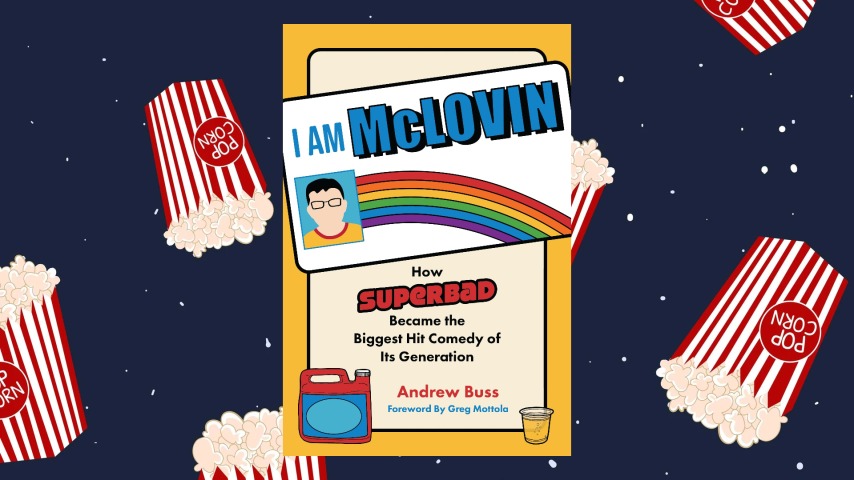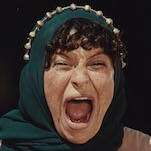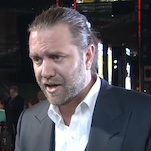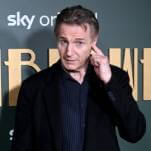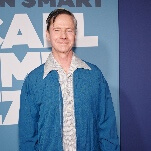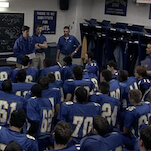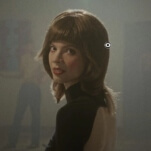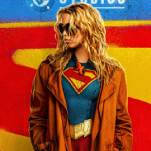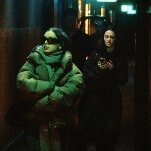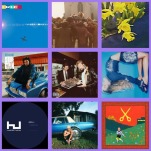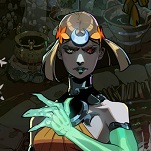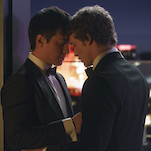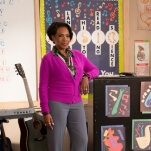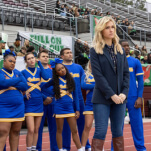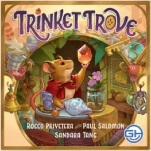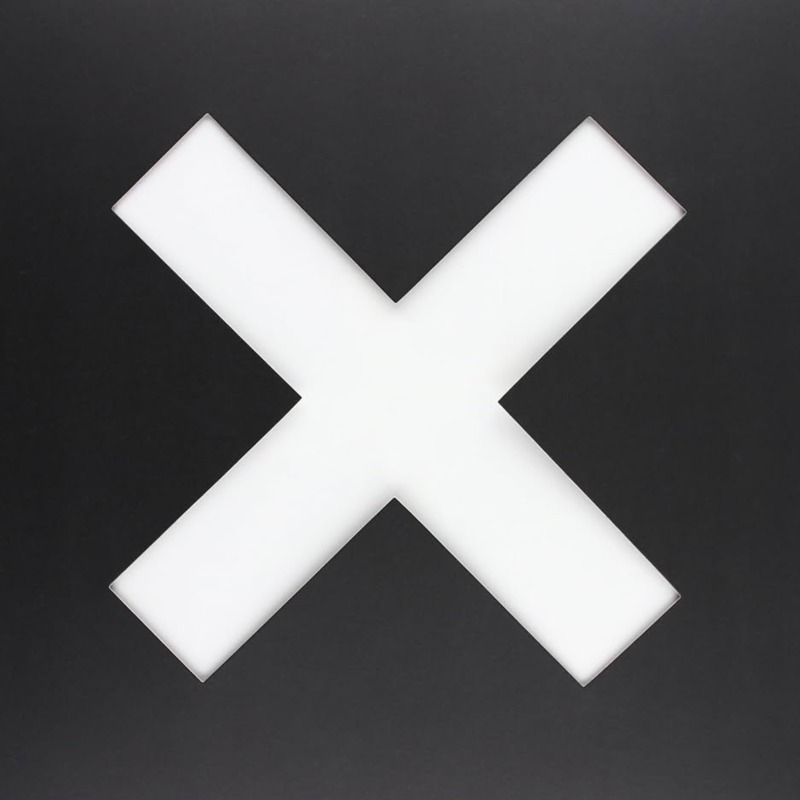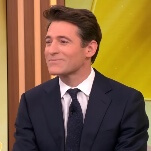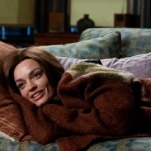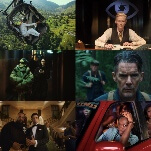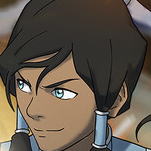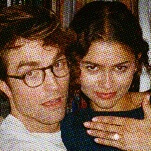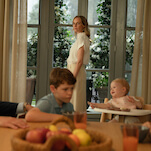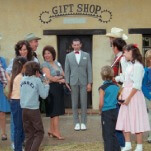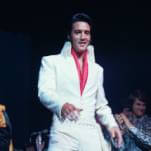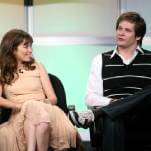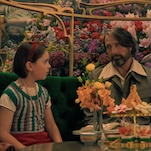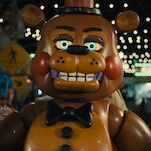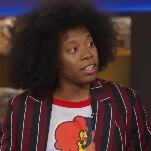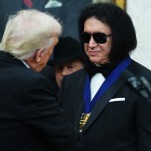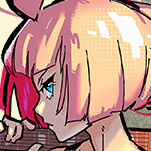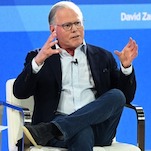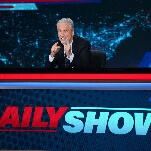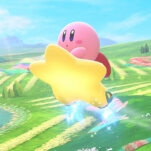Every generation has its own definitive high school comedy movie, and for millennials, it’s undoubtedly Superbad. The film—directed by Greg Mottola, produced by Judd Apatow, and penned by Seth Rogen and Evan Goldberg in their feature-length writing debut—was an immediate phenomenon upon its release in 2007, thanks in no small part to its dynamic cast. It was an early career boost for Michael Cera, Jonah Hill, and Emma Stone, though the most memorable character is easily Christopher Mintz-Plasse’s Fogell, better known as McLovin after he obtains a fake ID with that indelible mononym printed on it.
In his new book, I Am McLovin: How Superbad Became The Biggest Comedy Hit Of Its Generation (out now via Applause Books), journalist Andrew Buss gives readers a behind-the-scenes look at the making of the film. Buss interviews all the major players associated with the film—including Mottola, Apatow, Rogen, Goldberg, Cera, Hill, Stone, Mintz-Plasse, Bill Hader, and Martha MacIsaac—and traces the highs, lows, and frequent hilarity of the production. In this exclusive excerpt, Buss explores how the on-screen chemistry between McLovin and police officers Michaels (Rogen) and Slater (Hader) grew from a real-life bond and why Goldberg was initially hesitant about the film’s final scene.
Just as important as getting the chemistry right between Seth and Evan was the chemistry between Fogell and the two cops. This dynamic makes up 85 percent of Fogell’s scenes—and 100 percent of the cop scenes. So it was crucial to make sure that chemistry showed on the film. Luckily, it did. As Hader would later recall about sharing scenes with Mintz-Plasse, “Working with him was great. He broke his wrist trick-or-treating. I went ‘What happened?’ He went ‘Oh man. I was trick-or-treating with my homies. I fell and broke my wrist.’ He was so cool that by the end of it I was like ‘Oh, I should still be trick-or-treating.’ He was such a confident performer and laid back. You felt while we were shooting that ‘Oh man. This guy is gonna really pop in this movie.’”
As Mintz-Plasse would recount, “For me, the number-one priority in comedy is feeling comfortable, because you want to feel safe. You don’t want to feel like, if you say a bad joke, you’re gonna get judged. With them, it’s the complete opposite. They made me feel super comfortable to say whatever I wanted to say, however dumb it was or however wrong it was.”
The chemistry that Mintz-Plasse shared with Hader and Rogen translates to the screen. Most remarkably, it doesn’t feel like the two cops are ever looking down on Fogell throughout the film, as they do with the other high schoolers in the movie. As obnoxious as the characters might be—not to mention unbelievably bad at their jobs—they have a certain paternal fondness as well as respect for Fogell. We watch as they take him under their wings. Perhaps the most “epic” scene in the film features the two officers and Fogell lighting the police car on fire and then shooting guns at it.
It was actually the first time Hader had shot a gun on camera, something he would become a lot more familiar with years later when he played the eponymous hitman in HBO’s Barry. To help prepare for shooting a gun on camera, Hader, Rogen, and Mintz-Plasse decided to go to a shooting range. It became a group outing. Cera and Hill wound up tagging along, although Hill apparently refused to go in, telling Hader, “Fuck that. No way I’m going in there.” Hader also found himself uncomfortable with the idea of having people with live ammo shooting guns right next to him. He spent a lot of his time at the gun range smoking cigarettes outside with Hill. Everyone else had fun, though.
At a certain point, their time at the shooting range became less about trying to train Mintz-Plasse with the type of gun he’d be shooting on camera—your standard handgun—and more about finding the biggest gun possible for him to shoot, which turned out to be a shotgun. Given how little he weighed at that point in time, the blast from the gun would literally throw him backward, and everyone would have to get out of the way. Mintz-Plasse would later reflect, “I weighed like 105 pounds. I’m the size of the shotgun. And I’m holding this thing and I shoot it and it like launches my whole body back. And I remember being like ‘That was crazy.’ And I’m turning the gun around, and everyone’s like ‘Fucking point it away, bro.’ I had no idea what I was doing.”
The scene in the final film where the car is set on fire and Mintz-Plasse fires the gun is made even more epic thanks to the song choice. While filming the scene, Hader improvised by singing the song “Panama” by Van Halen. The choice is a stark contrast to the rest of the film’s funky musical vibe, but in the scene, it fits. Immediately after the take, Apatow went over to Hader and let him know that the ad-lib just cost them a ton of money, as they now had to license the song.
Speaking of Hader, this was one scene he did not enjoy shooting. The script required him to do donuts in a parking lot in a car whose windshield is full of cracks. He had to lean his body out of the car just to be able to see. There were giant light poles in the parking lot, and every time he spun around, he was afraid that he was going to hit one. Mercifully, they completed the scene without incident.
One of the film’s biggest emotional moments is the sleeping bag scene. After both Seth and Evan have a rough night at the party—and both are very much still intoxicated—they end up in Evan’s basement, tucked into sleeping bags. What follows is the film’s most earnest and authentic discussion yet about their friendship. By the end of the scene, they declare how much they love each other before going to sleep. It’s this scene that really drives home what the movie is all about. It was never about the party or the alcohol or getting girls. It is about separation anxiety between two childhood best friends. Both Hill and Cera nail the scene, making you care about these two characters more than you ever expected to.
The scene was actually a late addition to the film. According to Mottola, Apatow felt like something was missing toward the end. There needed to be one more emotional beat before Evan and Seth go to the mall in the morning. What Rogen and Goldberg came up with was the sleeping bag scene, right before production was set to start. It turned out to be exactly what the film was missing. On the day of the shoot, Hill even improvised the moment where he “boops” Evan’s nose in a hilariously sweet—albeit clearly drunken—manner.
For the film’s true final scene, Seth and Evan casually run into Jules and Becca at the mall the day after the party. In the sober light of day, there is some initial awkwardness that quickly goes away. For the first time, Seth and Evan are making an honest attempt at forging a connection with their crushes, realizing that they don’t need a big party in order to make an impression. Nothing seems forced within this meet-cute. It’s an idea that Apatow suggested and that Goldberg was initially hesitant to. He declared it as corny and “the lamest idea in the world.”
Goldberg continued, “But when we had the actors there, I saw what Judd had been getting at the whole time. With the right actors there, you can make the right awkwardness so that this moment will be both a satisfying wrap-up and a not corny, tie-everything-together kind of scene. Then Greg Mottola got the perfect music and the perfect shots with Russ Alsobrook. I don’t know, they did it. I credit my lack of experience at the time with making me naive about how well that scene would have worked.”
